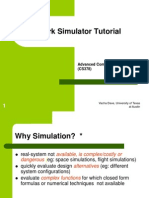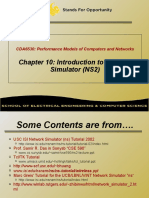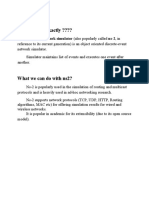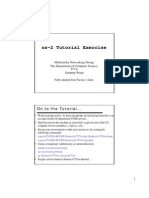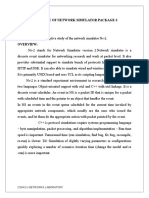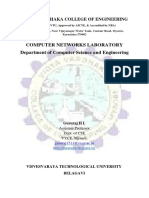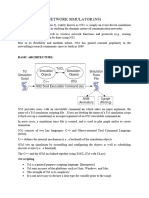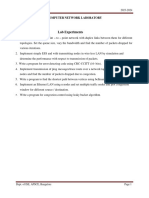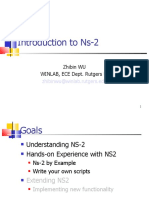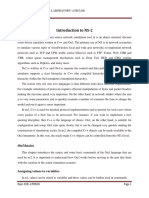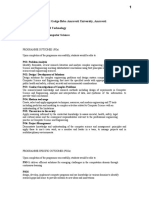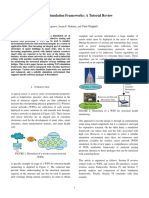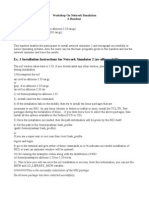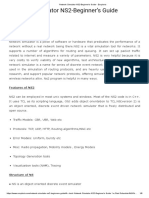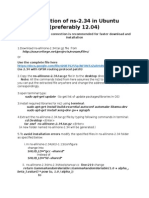0% found this document useful (0 votes)
387 views47 pagesNS2 Tutorial From Internet
This document provides an overview of network simulation using NS2 (Network Simulator 2). It discusses the motivation for network simulation, gives a high-level overview of discrete event simulation and the NS2 simulator. It describes what a simulation is, the advantages and drawbacks of simulation, and the typical components of a simulation program like simulated time, system state, events, and the event list. It also provides an outline of topics covered in NS2 like creating network topologies, observing behavior through tracing, and an example of setting up a simple topology in NS2.
Uploaded by
qasim5564Copyright
© Attribution Non-Commercial (BY-NC)
We take content rights seriously. If you suspect this is your content, claim it here.
Available Formats
Download as PPT, PDF, TXT or read online on Scribd
0% found this document useful (0 votes)
387 views47 pagesNS2 Tutorial From Internet
This document provides an overview of network simulation using NS2 (Network Simulator 2). It discusses the motivation for network simulation, gives a high-level overview of discrete event simulation and the NS2 simulator. It describes what a simulation is, the advantages and drawbacks of simulation, and the typical components of a simulation program like simulated time, system state, events, and the event list. It also provides an outline of topics covered in NS2 like creating network topologies, observing behavior through tracing, and an example of setting up a simple topology in NS2.
Uploaded by
qasim5564Copyright
© Attribution Non-Commercial (BY-NC)
We take content rights seriously. If you suspect this is your content, claim it here.
Available Formats
Download as PPT, PDF, TXT or read online on Scribd
/ 47
